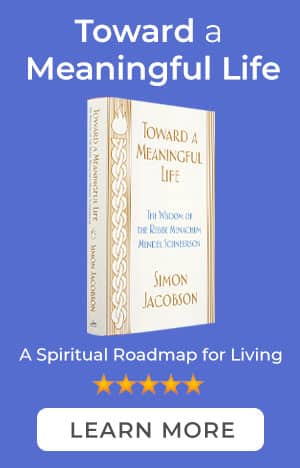The Essence of Chabad Chassidus: A Personal Journey
As I reflect on my journey through the teachings of Chabad Chassidus, I find myself drawn to a pivotal concept that has not only shaped my understanding of spirituality but has also transformed my daily life: the idea of “Ayin BeTachlis,” or the notion of seeing beyond the surface. This principle encapsulates the essence of what it means to live a life imbued with depth and meaning, and it is a cornerstone in the teachings of Rabbi Schneur Zalman of Liadi, the founder of Chabad.
Discovering Depth in Everyday Life
In our fast-paced world, where distractions abound and superficiality often reigns supreme, it is easy to become ensnared in a cycle of mundane existence. Yet, as I delved deeper into Chabad philosophy, I began to appreciate how Ayin BeTachlis invites us to look beyond appearances. It urges us to seek out the divine spark within every creation—an idea that resonates profoundly with me.
I vividly recall an encounter at my local synagogue during a Shabbat gathering. As we sang traditional melodies and shared stories from our lives, I felt an overwhelming sense of connection—not just with those around me but also with something much greater. Each person represented a unique facet of G-d’s creation; each story was imbued with purpose. This experience was illuminating; it revealed how every moment holds potential for spiritual awakening if only we choose to see it.
The Teachings of Rabbi Schneur Zalman
Rabbi Schneur Zalman’s teachings emphasize this essential perspective. He articulates that everything in existence is permeated by G-d’s presence; thus, nothing is truly separate from Him. The challenge lies in our ability—or inability—to perceive this truth amidst life’s chaos. He introduces us to Chochmah (wisdom), Binah (understanding), and Daas (knowledge) as tools for elevating our perception from mere observation to profound insight.
In one memorable lecture I attended, a distinguished scholar explained how these faculties can be harnessed to deepen our relationship with G-d and ourselves. It struck me then that applying Ayin BeTachlis requires not only intellectual engagement but also emotional investment—a melding of mind and heart that allows us to grasp deeper truths about our existence.
Practical Applications: Seeing Beyond Challenges
Embracing this perspective has radically altered how I approach challenges in life. Instead of viewing obstacles as insurmountable barriers, I have learned to regard them as opportunities for growth—a chance to uncover hidden blessings within hardships. For instance, when faced with personal struggles or setbacks at work, I now pause and ask myself: “What deeper lesson can be gleaned from this situation?”
This shift has proven transformative; rather than succumbing to despair or frustration, I find strength through introspection and faith. By practicing Ayin BeTachlis regularly, I’ve cultivated resilience—a quality that echoes throughout Jewish history as we’ve navigated trials over millennia.
Connecting Through Community
Moreover, Chabad teaches us about communal responsibility—the understanding that we are all interconnected souls striving towards the same divine source. This realization fosters compassion; when we view others through the lens of Ayin BeTachlis, their struggles become part of our own journey.
During community events organized by Chabad houses around the world—from Torah classes to charity drives—I have witnessed firsthand how this principle manifests itself beautifully among diverse groups united under shared values. People come together not merely out of obligation but because they recognize their collective mission: elevating themselves while uplifting one another along the way.
Conclusion: A Lifelong Path
As my exploration into Chabad Chassidus continues unfolding before me like an endless scroll revealing new layers beneath its surface wisdoms—each day offers fresh insights waiting patiently for discovery—I am reminded that embracing Ayin BeTachlis is not merely an intellectual exercise but rather a lifelong path toward spiritual enlightenment.
Through these teachings passed down through generations—from Rabbi Schneur Zalman’s profound insights captured within his seminal works such as Tanya—we are encouraged not just “to know” but “to live.” To see beyond appearances requires practice; it demands conscious effort infused with love—and ultimately leads us closer towards fulfilling our highest potential as individuals connected deeply within G-d’s grand design for humanity.



